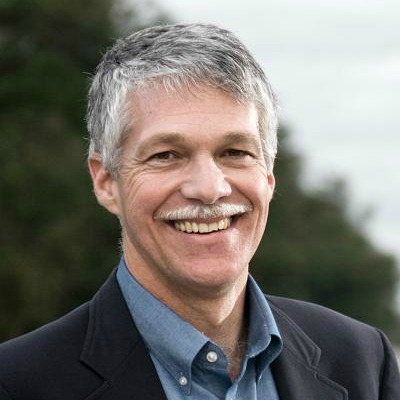 American Wind Energy Association (AWEA) CEO Tom Kiernan updated conference attendees on the status of the expired production tax credit (PTC) during the opening general session at AWEA's WINDPOWER 2014 Conference & Exhibition, being held in Las Vegas until May 8.
American Wind Energy Association (AWEA) CEO Tom Kiernan updated conference attendees on the status of the expired production tax credit (PTC) during the opening general session at AWEA's WINDPOWER 2014 Conference & Exhibition, being held in Las Vegas until May 8.
Presiding over his first WINDPOWER in an official capacity (he delivered some opening remarks in 2013 in an unofficial capacity because he had not finished out his term with the National Parks Conservation Association), an enthusiastic Kiernan took to the stage and tasked attendees with doing their part to help extend the PTC, the wind industry's chief legislative vehicle.
Although Kiernan was quick to tout the wind sector's achievements – such as the falling cost of wind power and the successful defense of 20 attacks on state renewable energy portfolios standards in 2013 – instability at the federal level undermines the effectiveness of the industry as a whole.
Simply put, the PTC spurs wind development, and without stable policy, development comes to a standstill. In 2013, thanks to uncertainty about the PTC, the U.S. wind industry installed 1,087 MW, a 92% drop-off from 2012 installations (13,131 MW).
The good news, explained Kiernan, is that the PTC is included in the EXPIRE Act, a tax extenders package that recently passed in a committee and is scheduled to hit the Senate floor. The bill would allow wind energy developers to qualify for the PTC or investment tax credit if construction is started by the end of 2015. In a post-session news conference, Kiernan said there's a ‘good probability’ the Senate would act on the bill next week. As for action in the House, Kiernan commented, ‘We're hoping that the House takes a bi-partisan view expressed by its leadership to heart.’
To ensure the industry's message gets delivered, Kiernan outlined a strategy for how attendees could serve as their own best advocates. First, he said sign up at powerofwind.org and get active within social media sites such as Twitter and LinkedIn. Then, a telephone number (202-224-3121) was displayed on the monitors flanking the stage.
‘Call that number,’ urged Kiernan. ‘It's the Capitol Hill switchboard. Tell them that you want to speak to your senator. Once you deliver the message about how important the PTC is, hang up, and dial that number again.’ Drawing audience laughter, Kiernan added, ‘And tell them you want to talk to your other senator.’
‘We are at a crossroads,’ Kiernan said. ‘We need to get the PTC extended.’
An additional sign of encouragement, he noted, could come from the implementation of Section 111 (d) of the Clean Air Act, which seeks to limit the amount of carbon emissions from new and existing power plants.
According to Shaun McGrath, administrator of the Environmental Protection Agency's (EPA) Region 8, who joined Kiernan on stage during the opening general session, Section 111 (d) provides for federal and state collaboration on securing emissions reductions from new and existing power plants. Notably, he said, the legislation provides states with flexibility to identify the optimal systems of such reductions.Â
In January, the EPA imposed performance standards for new power plants and President Obama ordered the EPA to issue similar standards for existing power plants by June 1. According to McGrath, a final rule is due in June 2015 and expected to be fully implemented by June 2016.
Kiernan said not only could the standards' implementation increase demand for wind energy, but the legislation could also begin to revive some state renewable portfolio standards as impactful demand drivers.



